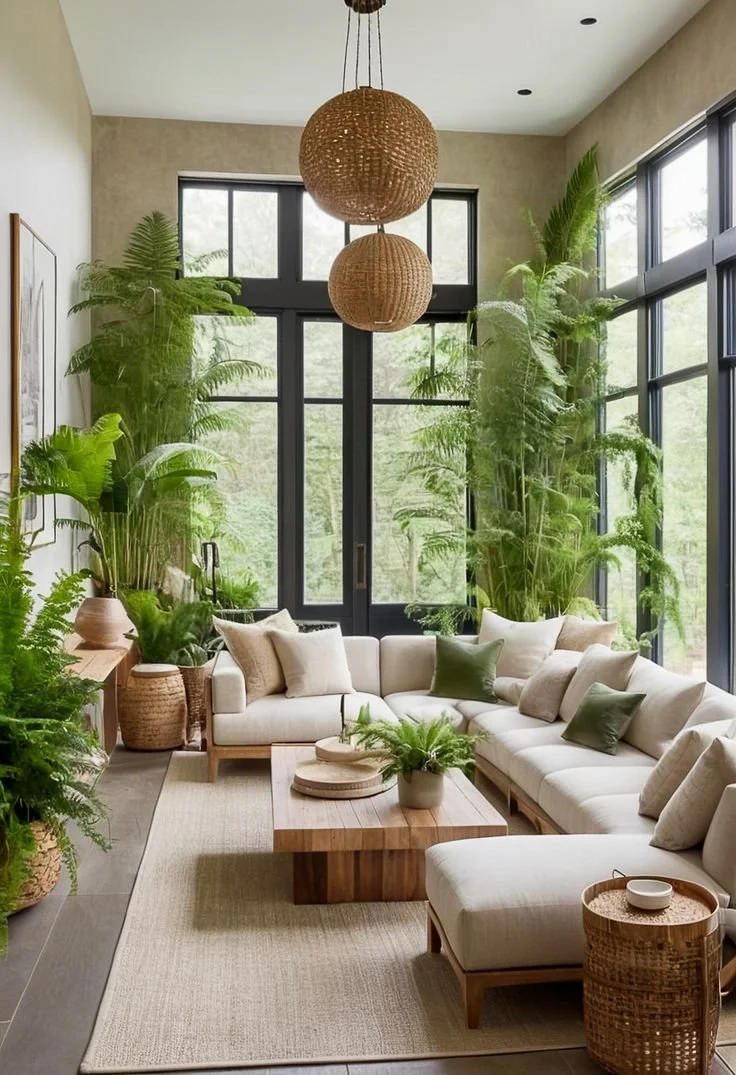Biophilic Design: How Plants & Light Improve Mood at Home
Biophilic design connects us with nature inside our homes. Its core principle is blending natural elements—like plants, light, and water—into everyday spaces. Meanwhile, science confirms this style improves mood, health, and cognitive function.
What Is Biophilic Design?
Firstly, biophilic design stems from our innate need to bond with nature—known as biophilia.
Also, designers like Stephen Kellert and E.O. Wilson have shown that integrating natural features supports our well-being.
Therefore, bringing greenery and light indoors is more than decoration—it’s essential for health.
Natural Light: A Mood Booster
Secondly, ample natural light regulates circadian rhythms and boosts serotonin production.
Moreover, studies report that daylight exposure reduces depression and anxiety, improves sleep, and heightens daytime alertness.
For example, hospital patients with natural light experience faster recovery and less stress.
The Power of Indoor Plants
Additionally, plants purify air, filter toxins, and raise oxygen levels.
Also, experimental reviews link indoor greenery to lower cortisol, reduced stress, and enhanced mood.
Furthermore, office green spaces increase productivity and lessen sick days by up to 30%.
Why Biophilic Design Improves Mental Health
Moreover, two key theories—Attention Restoration Theory and Stress Reduction Theory—explain why nature indoors works.
Because natural elements reduce stress and mental fatigue by allowing effortless focus and emotional calm.
Consequently, cognitive clarity and creativity receive a boost.
Beyond Plants: Water, Textures & Views
In addition, features like indoor water, wood, stone, and natural patterns enhance well-being.
Likewise, even views of nature through windows or artwork improve mood and decrease stress responses.
Light Quality and Circadian Health
Furthermore, light color temperature matters.
For instance, blue-rich morning light enhances alertness, while warm “zero-blue” bulbs in the evening promote rest.
Moreover, smart lighting systems that mimic natural light rhythms support sleep and mental health.
How to Bring It Home
Maximize daylight: Position furniture near windows; add skylights and reflective surfaces.
Layer plants: Mix floor plants, table greenery, and wall-mounted vertical gardens.
Add natural materials: Include wood, stone, and nature-inspired textures or prints.
Use dynamic lighting: Equip spaces with lighting that shifts from cool to warm tones throughout the day.
Incorporate water or sound: Use indoor fountains or nature soundtracks for soothing background ambiance.
Real-Life Benefits
Ultimately, biophilic design reduces stress, boosts focus, and enhances mood.
Also, circular studies note that employees using biophilic offices report up to 15% higher productivity and lower absenteeism .
Additionally, homes with plants and light report fewer feelings of isolation and better overall well-being.
Final Thoughts
Biophilic design elevates homes into restorative spaces.
By weaving in daylight, greenery, natural materials, and circadian lighting, you cultivate a calmer, healthier atmosphere.
So, start small—add a plant, open blinds, adjust lighting—and watch your home transform into a wellbeing sanctuary.

